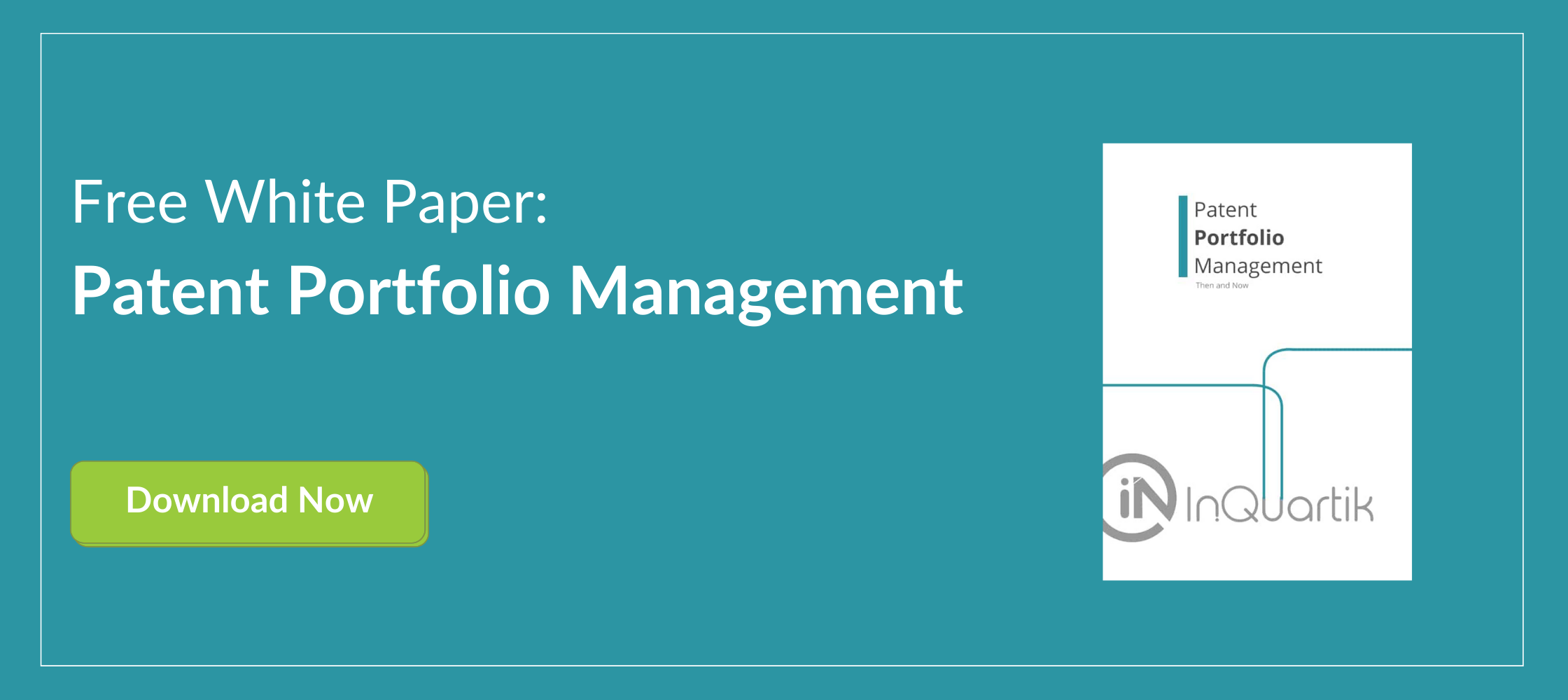This article was written by Y.P. Jou — founder and CEO of InQuartik
In the current era of digital convergence—5G, AIOT, trade wars, tech wars, and supply chain restructuring—this is the first time that patents have been listed as “strategic resources” in the global economy, technology, and politics—547 years after the Republic of Venice promulgated the world’s first patent law in 1474. However, the roles defined by the existing laws on patent practice have shielded the vision of professional practitioners, limiting their playing field, leading to the urgent need for legal liberation and innovation.
In my opinion, leading patent professionals in the 21st Century are those who provide actionable insights to support decision-makers in making impactful decisions. This is done by extracting signals from the noise through data-driven mechanisms powered by AI.
The leading types of patent professionals include those specializing in:
1. Patent data
Professionals in patent data mainly work on data engineering, data science, and data visualization. Patent data should be of good quality, complete, correct, consistent, standardized, and instant. Only with high-quality data can algorithms be developed to support patent analysis and decision-making.
2. Patent systems
Patent systems refer to smart SaaS—such as Patentcloud—a patent intelligence platform that provides actionable insights to support organizations in technology, product, R&D, manufacturing, investment, M&A, and R&D personnel operations. The platform also allows for more impactful and accurate decisions related to managing asset portfolios, patent deployment, licensing, transaction, litigation, and invalidation. It supersedes the traditional search system and enables patent professionals to free themselves from time-consuming, tedious, and repetitive patent work. Only smart analytics apps in the SaaS system—such as Quality Insights, Due Diligence, and SEP OmniLytics—can instantly provide meaningful signals instead of noise.
3. Patent analysis
When the vast amount of patent data no longer needs to be searched and reviewed individually, professionals in patent analysis—using their professional insights garnered through the analysis of artificial intelligence and high-quality data—can provide C-level decision-makers, including the CEO, CTO, CSO, CMO, CFO, CLO, CIPO, and CHRO with the insights needed for making impactful decisions.
4. Patent deployment
Patent deployment refers to applying for patents in different countries according to a company’s organizational strategy, business model, profit model, and various development chains such as the global industrial chain, innovation chain, investment chain, and M&A chain. Deployment is carried out to ensure financial performance, such as high gross profit rates, market share, and monetization rate. At the same time, patent deployment done well can promote the integration of transnational resources and increase innovation.
5. Patent portfolio management
Patent portfolio management refers to the management and operation—including maintenance, divestiture, and increase—of patent assets through technical structure, product structure, application structure, and the comparative competitive relationships of a company to support asset management benefits such as cost reduction and income improvement. Professionals in this field also support the business of handling patented assets in investment, acquisition, and financing guarantees.
6. Patent filing (patent agent)
Although patent filing is the primary work of many patent professionals, new patent filing methods are available through big-data-based patent life cycle and patent portfolio management. Additionally, changes in patent prioritization have shifted since the quality and value of patents are gradually gaining prominence in replacing the original method—counting and accumulating quantity.
7. Patent risk control
Patent risk control refers to the elimination or resolution of transnational patent infringement risks faced when developing and marketing commodities, as well as in anti-monopoly disputes and patent litigation.
The measures that can be taken include:
- Invalidation, design around, or proof of non-infringement of a third-party patent
- Adjustment of the production and marketing business models
- Other necessary measures such as negotiation with the relevant parties
Professionals working in patent risk control need to develop risk control strategies and negotiate with interested parties from other countries.
8. Patent accounting
Professional treatment of patents in accounting, finance, and tax is necessary for the new economic era, especially for transferring the R&D expenses for patent development into account names in the income statement, balance sheet, and inventory catalog.
It has been 527 years since the publication of Summa de Arithmetica Geometrica, Proportioni et Proportionalita written by Italian mathematician Luca Pacioli in 1494, and the accounting system is still unable to reflect patent value by transferring R&D expenses to assets. Hopefully, patent data will solve this age-old problem and will allow corporations to fully recognize the value of both tangible and intangible assets in financial statements. Patent accounting and finance are the basis in quantifying the competitiveness of patent commercialization and the financial performance of patent monetization. Further patent monetization practices, such as transaction, licensing, valuation investment, and financial guarantees involving complex international tax issues, will need patent professionals with expertise in accounting and taxes.
9. Patent commercialization
Patent commercialization is described as the main act of integrating commercialized resources to realize R&D achievements.
For corporations, patent commercialization is not difficult as many already focus on developing and engineering existing products. However, this is a pain point for academic research fields and technology start-ups primarily engaged in basic research and their related applications. Professionals in patent commercialization are therefore urgently needed to realize the commercialization of R&D and innovation.
10. Patent monetization
Patent monetization refers to obtaining huge financial performance through international patent licensing, trading, and infringement litigation. It also includes the establishment and operation of patent pools, especially those for standard-essential patents (SEPs).
To sum up, patent professionals in the new era need to possess a “data-driven decision-making” mindset and the ability to use emerging technologies and big data-assisted solutions and tools for patent-related operations to transform R&D results and create value in patent monetization successfully.
Read more about the next generation of patent portfolio management models with the Patent Portfolio Management white paper!


